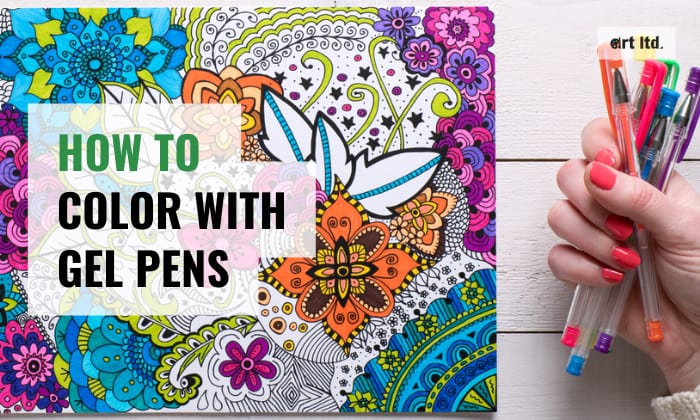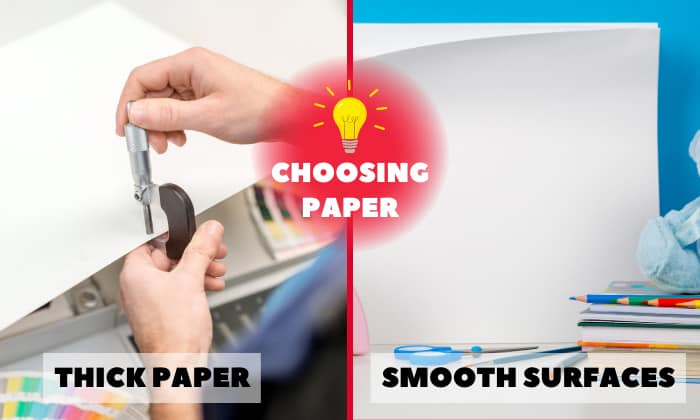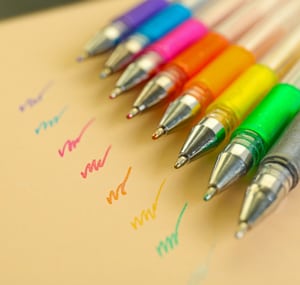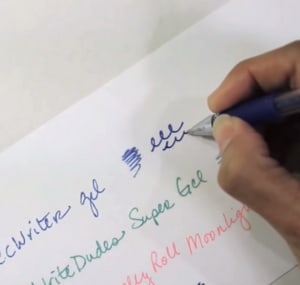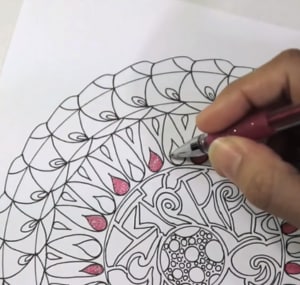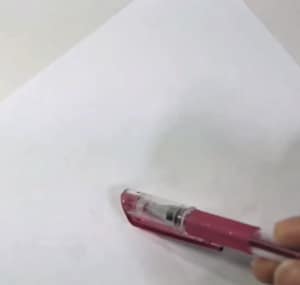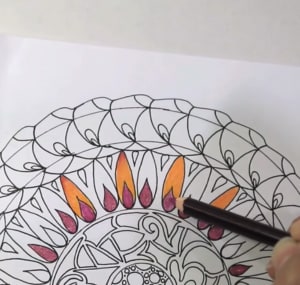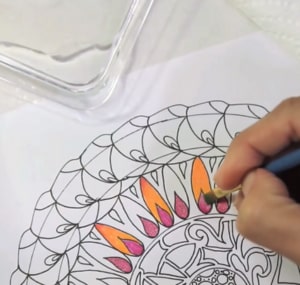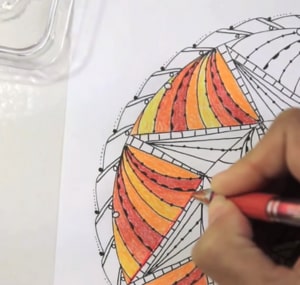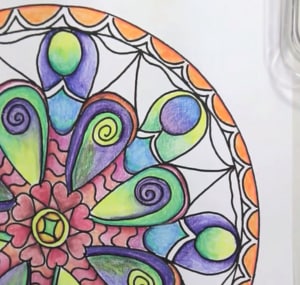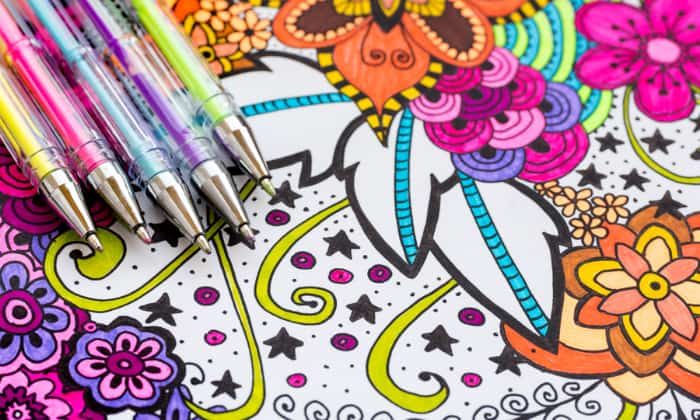Gel pens always offer a wide range of vibrant colors that bring life and vibrancy to your artwork. Their smooth and even application makes coloring with gel pens a delightful experience. It allows you to create intricate designs and add stunning details.
How to color with gel pens like a pro? From choosing pen colors to blending and layering, we’ll provide several drawing ideas and a gel pen coloring tutorial for beginners. Dive in to learn more!
Table of Contents
Choosing the Right Paper for Gel Pens
- Look for thick paper – Gel pens tend to have wet ink, so using thick and heavier-weight paper will minimize bleeding and show-through. So, you should look for paper designed for gel pen art or coloring, usually labeled as gel pen drawing paper, mixed media paper, or marker paper.
- Choose papers with smooth surfaces – Gel pens work best on smooth or coated surfaces, allowing the ink to glide easily without causing too much friction or resistance.
Some smooth papers are OOLY DIY Cover Sketchbook, Chalk-Style Expressions Coloring Book, Journal Black Lined Paper, etc.
How to Use Gel Pens
Step 1: Choose a gel pen color
Select the gel pen color you want to use for your coloring project. Gel pens come in various colors and finishes, such as glitter, metallic, or neon.
Step 2: Test the gel pen
Before you start coloring, test the gel pen on scrap paper to ensure it works properly. Besides, you can familiarize yourself with its color and texture.
Step 3: Begin coloring
Place your coloring book or paper on a smooth and stable surface, ensuring it’s comfortable to work on.
If you’re using a coloring book, flip to a new page or choose a blank piece of paper. It will prevent smudging or color transfer from previous gel pen coloring pages.
Now, start by selecting an area or shape that you want to color. Hold the gel pen comfortably in your hand with a relaxed grip.
Step 4: Apply even pressure
You should apply even pressure on the gel pen tip to allow the ink to flow smoothly. Avoid pressing too hard, as it may cause the gel pen to skip or create uneven lines.
Also, work on coloring small sections at a time rather than trying to fill in large areas all at once. It will help you maintain control and prevent the gel pen from drying out.
Follow the outlines or patterns in your coloring book, or create your own gel pen designs if you’re working on a blank piece of paper. The gel pen can be used for both intricate details and broader strokes.
Step 5: Apply colored pencils
You can incorporate colored pencils alongside gel pen colors to add more depth and detail to your artwork.
Choose colored pencils that complement the gel pen colors or provide contrasting shades for added visual interest.
Also, blend the colored pencil with the gel pen colors if you want. You can use a gentle back-and-forth motion or a gel pen blending tool when blending with gel pens.
Step 6: Use a brush to blend with a little water
When you color flowers with gel pens, using a brush with a little water is best to create a blended effect or soften the colors.
Dip a clean brush into the water and lightly touch the gel pen strokes. The water will blend the colors or create a watercolor-like effect.
Step 7: Layer colors for depth
If you want to create depth or shading, consider layering different gel pen colors. Start with a lighter shade and gradually build up the color intensity by adding more layers.
Gel pens for coloring can be blended to create smooth transitions between colors. You can do this by slightly overlapping different gel pen colors to blend them together.
Step 8: Allow drying time
Gel pen ink takes a little time to dry, so be mindful of this to avoid smudging your artwork. Try not to touch or rest your hand on freshly colored areas until they are completely dry.
Note:
- When you’ve completed coloring a section or your entire art ideas, step back and assess if any areas need touch-ups or additional details. You can always go back and make adjustments or add more color if needed.
- If you want to switch to a different gel pen color, wipe the pen tip clean on a piece of scrap paper or tissue before using the new color. This will prevent any color residue from mixing and affecting your artwork.
Frequently Asked Questions
What Are Some Tips And Tricks For Coloring With Gel Pens?
- Choose different brands of gel pens to achieve blending effects.
- Use a “wet” ink gel pen for the base color and a “dry” ink gel pen for layering.
- Experiment with cross-hatching and stippling techniques to add texture.
- Blend colors by coloring the “dry” pen over the edge of the shaded area.
- Consider using a wet paintbrush to create a fading effect or blend colors.
- Use thick paper or cardstock to prevent buckling when using water-based techniques.
- Combine gel pens with markers to create interesting effects.
- Have fun, and don’t be afraid to experiment with different gel pen color combinations and techniques.
What Are The Common Things To Draw With Gel Pens?
- Mandalas: Gel pens are perfect for creating detailed mandalas with their smooth and vibrant colors.
- Zentangle patterns: You can use gel pens to create repetitive patterns and intricate designs.
- Flowers, nature, animals, landscapes, and cityscapes: Gel pens can create realistic, vibrant, and detailed artwork.
- Typography and lettering: Gel pens are great for creating decorative calligraphy and typography designs.
- Doodles, cartoons, and abstract art: Gel pens can create abstract and geometric patterns, allowing artists to explore their imagination and create unique designs.
Conclusion
Whether you’re looking for coloring ideas, drawing inspiration, or enhancing your coloring skills, gel pens offer a versatile and enjoyable medium to unleash your artistic potential.
Learning how to color with gel pens opens up a world of creativity and artistic expression. Incorporating shading techniques adds depth and dimension to your creations.
Besides, you can bring life to your drawings with various coloring techniques and create stunning artwork.
Read next:

Art has always been a part of my life; it influences my upbringing and later my career choice. For me, it is always a part of my parenting technique. So for whichever purpose that you come to art, you can start here with us.
